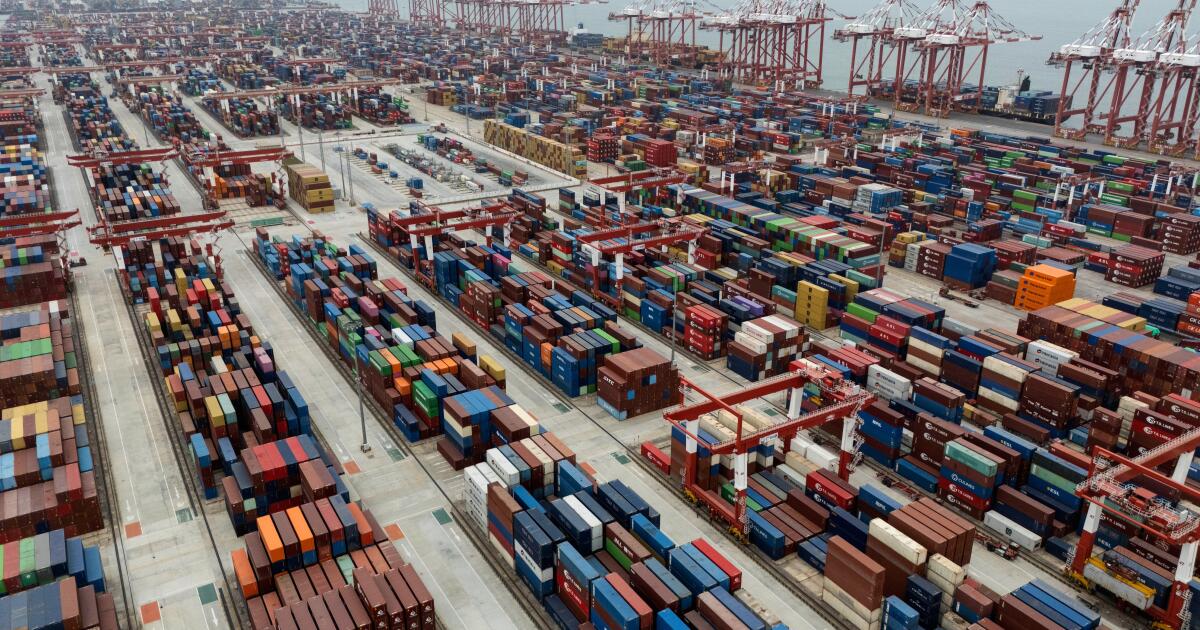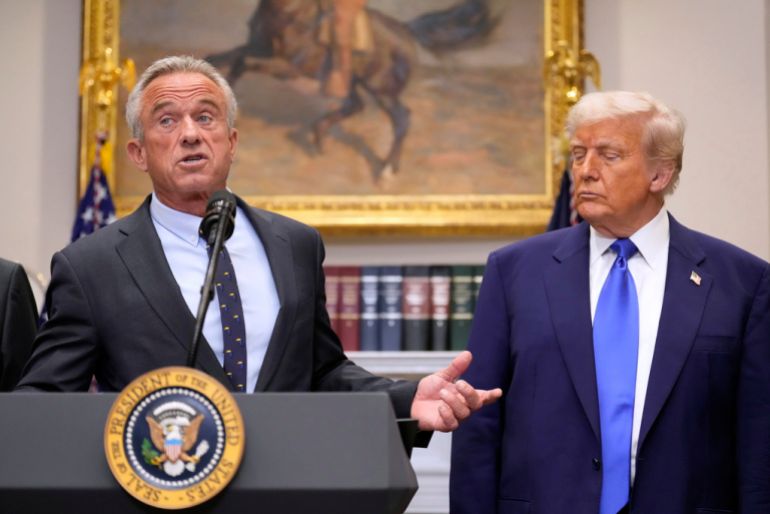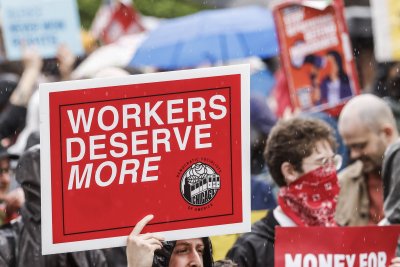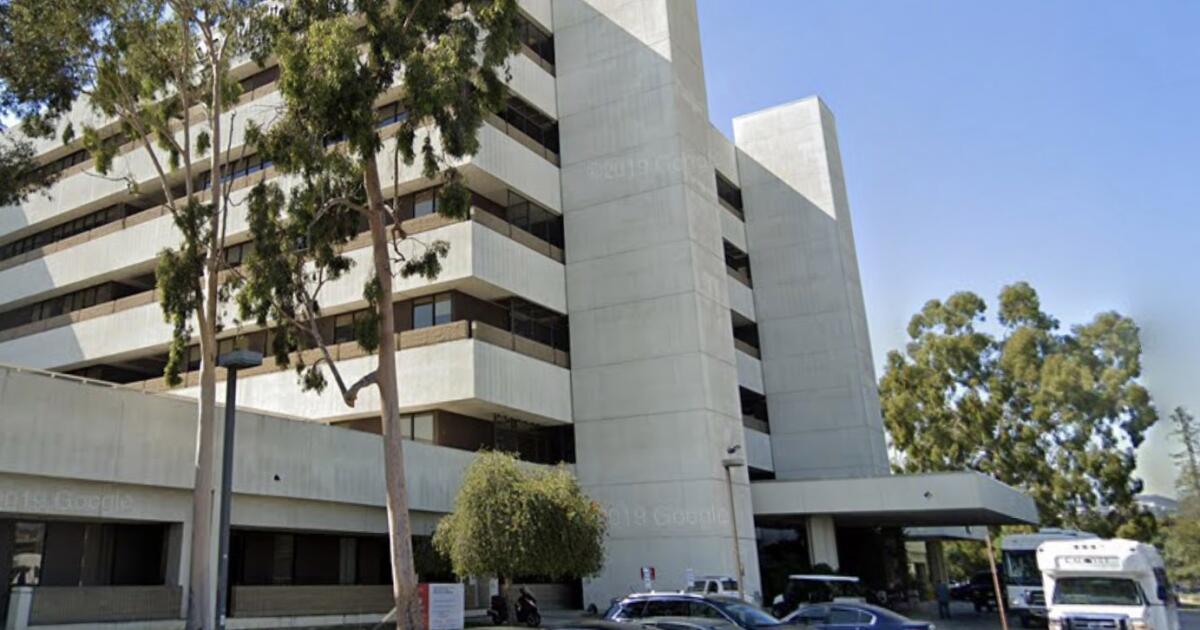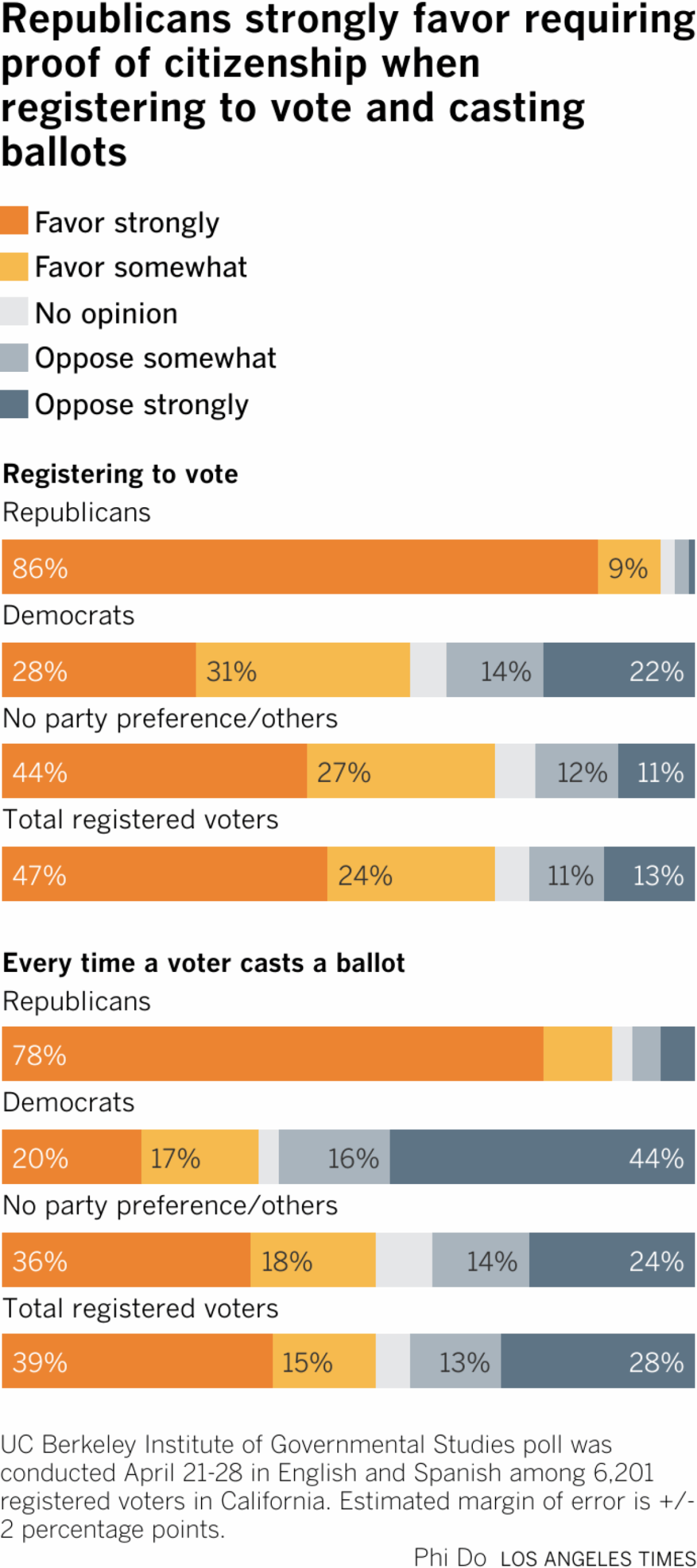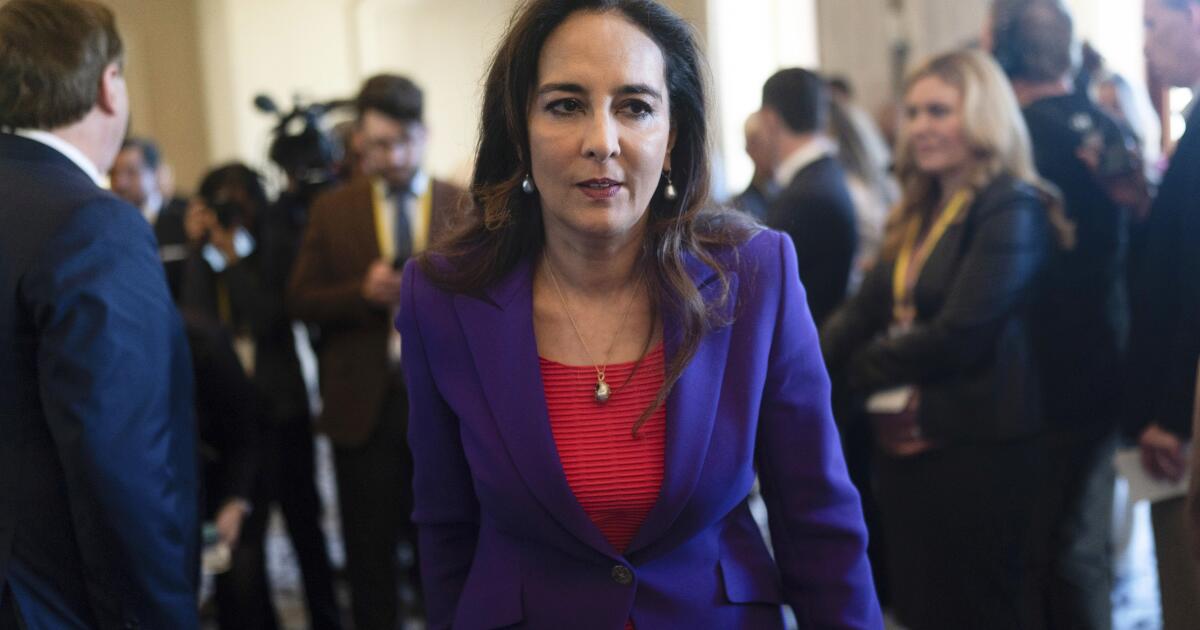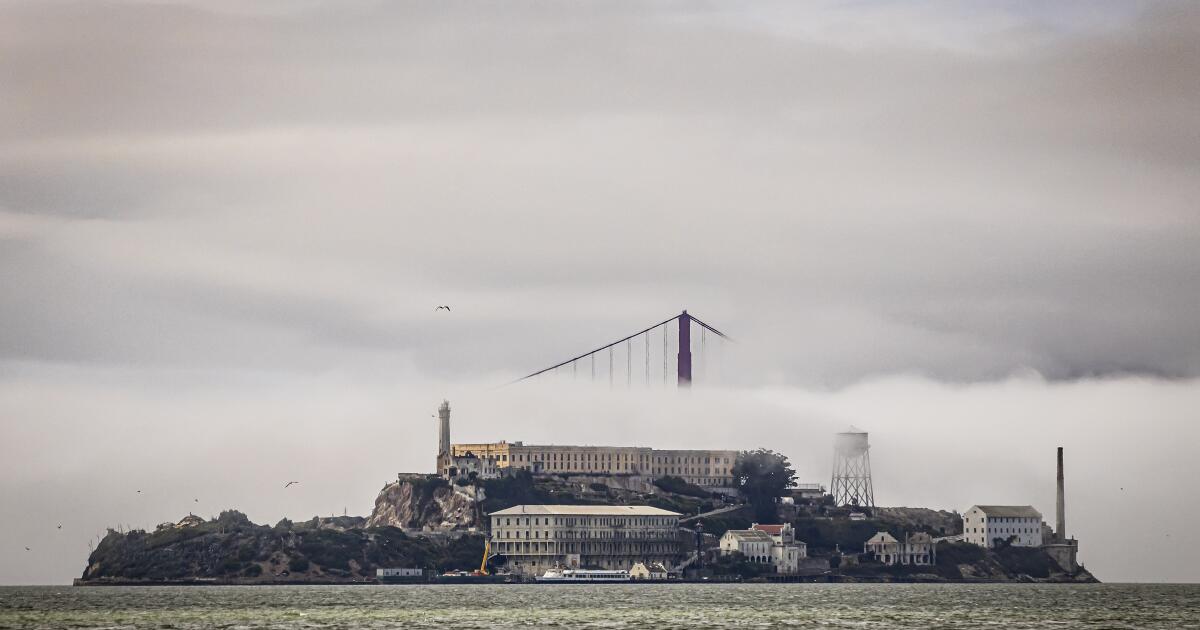While California voters are sharply divided along partisan lines when it comes to election integrity and voter fraud, they broadly support a politically-charged proposal from President Trump and other Republicans to require first-time voters to provide government-issued identification proving their citizenship in order to register, according to a new poll.
A majority of voters in both parties back the proof of citizenship requirement for registering, according to a new poll from the UC Berkeley Institute of Governmental Studies, co-sponsored by The Times. Most Californians also supported requiring a government ID every time a voter casts a ballot, though by a slimmer majority and despite most Democrats opposing the idea.
Mark DiCamillo, co-director of the Berkeley IGS Poll, said the bipartisan support for first-time voters showing proof of citizenship stood out, as many of the poll’s other findings showed a stark political divide and a majority of Californians at odds with Trump and his recent edicts on voting — which California and other states are suing to block.
Still, DiCamillo said his biggest takeaway was the sharp distrust in the state’s election system that the poll found among California Republicans, which he said should be a “serious concern” for state elections officials — even if a majority trust the system. Democratic voters in the state are largely confident in the state election system and doubtful of prevalent voter fraud, while many Republican voters feel the opposite, the poll found.
“It is significant to me that the Republicans in this state are not of that view. And that’s something that has to be dealt with,” DiCamillo said. “In an election system, you want both sides to be on board.”
Overall, 71% of respondents said they supported new voters having to prove citizenship upon registering, including 59% of Democrats, the poll found. Nearly all Republicans — 95% — backed the proposal, as did 71% of voters registered to other parties or as “no party preference.”
A separate proposal to require voters to show proof of citizenship every time they vote also drew support from a majority of poll respondents, but a much slimmer one — with 54% support. While 88% of Republicans backed that idea, about 60% of Democrats opposed it. Among independents and Californians registered with other parties, 54% supported it.
Democratic lawmakers in Sacramento have repeatedly rebuffed proposals for stricter voter ID laws in the state, including in recent weeks, when they shot down a voter ID bill from Assemblymember Carl DeMaio (R-San Diego). DeMaio also has launched a campaign to place a voter ID and proof of citizenship requirement on the 2026 ballot.
DeMaio said the poll showed there is “broad public support” for his measure — which would require both proof of citizenship upon registering for the first time and a photo ID for confirming identity each subsequent time voting — and that California Democrats are “out of touch” with the electorate.
“Overwhelmingly, voters support this ballot measure,” he said. “The only people who don’t support it? Sacramento politicians.”
The proposed ballot measure would require mail-in ballots to include the last four digits of the voter’s valid government-issued form of identification, along with the current requirement to have the signature of a voter on the ballot verified.
The polling was conducted April 21-28, about a month after Trump issued a March 25 executive order presuming to dictate to the states a slate of new election requirements that Trump said were necessary to restore integrity in U.S. elections, but many experts said were outside the scope of his authority.
Trump has alleged for years, without evidence, that the 2020 election was stolen from him and that voter fraud is widespread, including among immigrants who are in the country illegally. Neither of those things is true.
Trump’s executive order says voters must show a U.S. passport, Real ID or some other government-issued photo identification in order to register to vote. It says states also must limit their counting of ballots to those received by election day — not postmarked by then, as California and some other states currently allow — or risk losing federal funding.
The order also directs the Election Assistance Commission, which is an independent, bipartisan body outside the president’s control, to mandate the proposed restrictions and other, Trump-determined requirements for state voting systems, and to rescind its certifications of voting equipment in states that don’t comply.
Parts of Trump’s order — including the proof of citizenship requirement — have been blocked in federal court while litigation challenging the order continues. California is one of many states suing, with California Atty. Gen. Rob Bonta calling Trump’s order “a blatantly illegal power grab and an attempt to disenfranchise voters.”
In a statement on the poll results, Bonta said it was fortunate that a majority of Californians still have confidence in the state election system despite Trump “spreading lies” about voter fraud and other election issues for years. He said state law “already contains robust voter ID requirements with strong protections to prevent voter fraud,” and that his office “is committed to removing barriers to voter registration and to promoting greater participation in the democratic process — in and out of court.”
Dean C. Logan, registrar-recorder and county clerk for Los Angeles County, said in a court filing earlier this week that Trump’s order — if left intact — would “divert time, resources, and attention from other critical departmental responsibilities and election preparation, including assisting voters displaced by the Palisades and Eaton Canyon fires; upgrading the County’s Election Management System (‘EMS’) which serves as the backbone of the voter registration intake and database; and engaging in a site by site analysis of all 600-plus Vote Center locations to ensure they meet accessibility standards.”
The poll found Californians are largely at odds with Trump’s attacks on the integrity of U.S. elections, which is perhaps not surprising in a state where registered Democrats outnumber registered Republicans nearly 2 to 1.
For instance, the poll found that a majority of Californians — and strong majorities of Democrats — believe voter fraud is rare, express confidence in the integrity of the state’s voting system, oppose efforts by the federal government to take more control over voting from the state and counties, and oppose Trump’s proposal to prohibit the counting of mail ballots after election day.
Among the respondents who participated in the poll — 6,201 registered voters in the state — more than two-thirds, or 68%, expressed confidence in the overall integrity of the state’s election system. The same percentage opposed Trump’s recent proposal to prohibit the counting of ballots postmarked but not received by election day.
Well over half — or 57% — said they believed voter fraud in the state is very or fairly rare, while a similar percentage, 58%, said they were opposed to Trump’s proposal for the federal government to take greater control over state elections.
On all of those questions, however, Californians were heavily divided along partisan lines.
For instance, 61% of Republican voters said they are not very or not at all confident in the integrity of the state’s election system, which compared to just 13% of Democrats. And while 74% of Republicans said fraud was somewhat or very prevalent in state elections, just 14% of Democrats felt the same, the poll found.
A majority of voters — 58% — opposed the federal government taking more control over elections from the state, despite more than three-quarters of Republicans supporting the move.
And, while 57% of Republican voters backed Trump’s proposal to prohibit the counting of mail ballots postmarked but not received by election officials by election day, just 9% of Democrats agreed — with 86% of Democrats disagreeing.
Rick Hasen, a voting rights expert at UCLA Law School, said the poll results — including Californians’ overall confidence in the state’s election system, disbelief in prevalent fraud and opposition to federal takeover — were in line with other polling and what he’d expect.
“Most people in most states believe that their own state’s election system is run well, and that if there is any kind of problem, it’s elsewhere,” he said.
It was equally unsurprising that “Republicans have a much more cynical view of the process,” he said.
“Party supporters tend to follow their elites, and the top of the Republican Party has been making false and unsubstantiated claims about voter fraud for decades now,” Hasen said. “It’s no surprise that it’s seeped through to the electorate.”
Hasen said the results on proof of citizenship also made sense, as “voter ID has polled positively, so requiring proof of voter citizenship also tends to poll positively.” But, he questioned whether poll respondents really understood the implications of such a requirement.
Asked whether it would be easy or difficult to “present a government-issued photo ID as proof of citizenship when voting in an election,” 93% of respondents said it would be easy. But Hasen, many Democrats and most voting rights groups have argued just the opposite — that millions of U.S. citizens would be blocked from voting by the measure because they lack the required documents, which don’t include birth certificates, which don’t have photos, or many California driver’s licenses.
“I just don’t think people recognize that a lot of government-issued photo IDs would not qualify, and they certainly wouldn’t qualify under the president’s proposed rules,” Hasen said.

